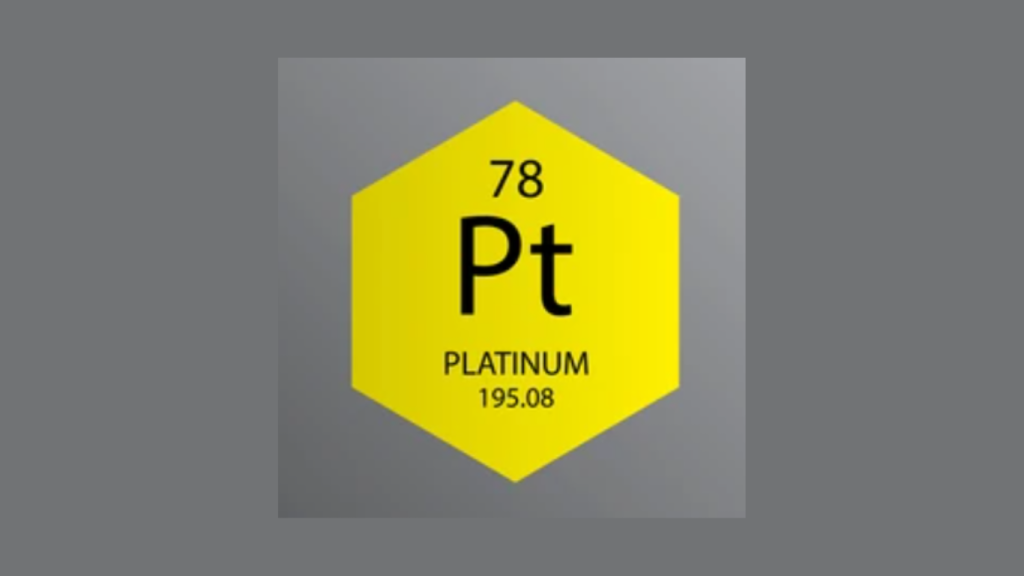The electron configuration for Pt is [Xe] 4f14 5d9 6s1. Pt, also known as platinum, is a transition metal that belongs to group 10 of the periodic table.
Its electron configuration reflects how electrons are arranged in the atom’s energy levels, from the innermost to the outermost. The [Xe] notation indicates the core electrons, which are the ones located closer to the nucleus and not involved in chemical reactions. At the same time, the last four digits represent the valence electrons responsible for bonding.
In this case, Pt has nine valence electrons in the 5d and 6s subshells, making it a good conductor of electricity and corrosion-resistant. Moreover, due to its remarkable physical and chemical properties, Pt is widely used in various industrial applications, from jewelry to catalytic converters.
Steps To Determine Pt Electron Configuration
Platinum (Pt) has an electron configuration of [Xe] 4f14 5d9 6s1. To determine it, use the periodic table to identify the number of electrons in each subshell, then add them together.
Finding an element’s electron configuration is an important task that requires some steps. In this blog post, we will discuss the process for determining the electron configuration of platinum (Pt).
Step 1: Find the Atomic Number Of Pt
The first step in determining the Pt electron configuration is to find its atomic number. Platinum is located in the periodic table with the symbol ‘Pt’ and atomic number 78. The atomic number represents the number of protons in the atom’s nucleus, which also equals the number of electrons.

Step 2: Determine the Number Of Electrons In Each Energy Level
After finding the atomic number, we must determine the number of electrons in each energy level. The electrons in an atom are arranged in energy levels represented by the letters K, L, M, N, and so on, starting from the nucleus. The maximum number of electrons that can be accommodated in each energy level is given by the formula 2n^2, where ‘n’ represents the energy level. To determine the number of electrons in each energy level for Pt, a table can be created as follows:
| Energy Level | Number of Electrons |
|---|---|
| K | 2 |
| L | 8 |
| M | 18 |
| N | 32 |
| O | 17 |
| P | 1 |
Step 3: Write Electron Configuration
The final step is to write the electron configuration of Pt, which represents the distribution of electrons in each energy level. This can be done by using the following notation: 1s^2 2s^2 2p^6 3s^2 3p^6 3d^10 4s^2 4p^6 4d^10 5s^2 5p^6 4f^14 5d^9. This notation indicates the number of electrons in each energy level, and the superscript indicates the number of electrons in each sublevel. In summary, the electron configuration of platinum can be determined by finding its atomic number, determining the number of electrons in each energy level, and writing its electron configuration. By following these steps, we can determine the electron configuration of any element. Google maps
Frequently Asked Questions Of Electron Configuration For Pt
What Is The Electron Configuration Of Pt 78?
The electron configuration of Pt 78 is [Xe]4f14 5d9 6s1, with 78 electrons arranged in different energy levels or orbitals around the platinum atomic nucleus.
Which Element Has The Electron Configuration Of 1s 2 2s 2 2p 6 3s 2 3p?
The element with the electron configuration of 1s2 2s2 2p6 3s2 3p is Silicon (Si).
What Is The Electronic Configuration Of Pt In The Ground State?
The electronic configuration of Pt in the ground state is [Xe]4f14 5d9 6s1.
What Is The Electron Configuration Of The Pt Ii?
The electron configuration of Pt II is [Xe] 4f14 5d8 6s2.
Conclusion
To wrap up, understanding the electron configuration of Pt is crucial in comprehending its chemical properties and behavior in various reactions. With an electronic configuration of [Xe]4f14 5d9 6s1, Platinum exhibits admirable chemical stability and resistance to corrosion. Its d-orbitals are partially filled as a transition metal, making it an excellent catalyst for many reactions.
Therefore, mastering its electron configuration opens up its vast potential for various industrial applications.

